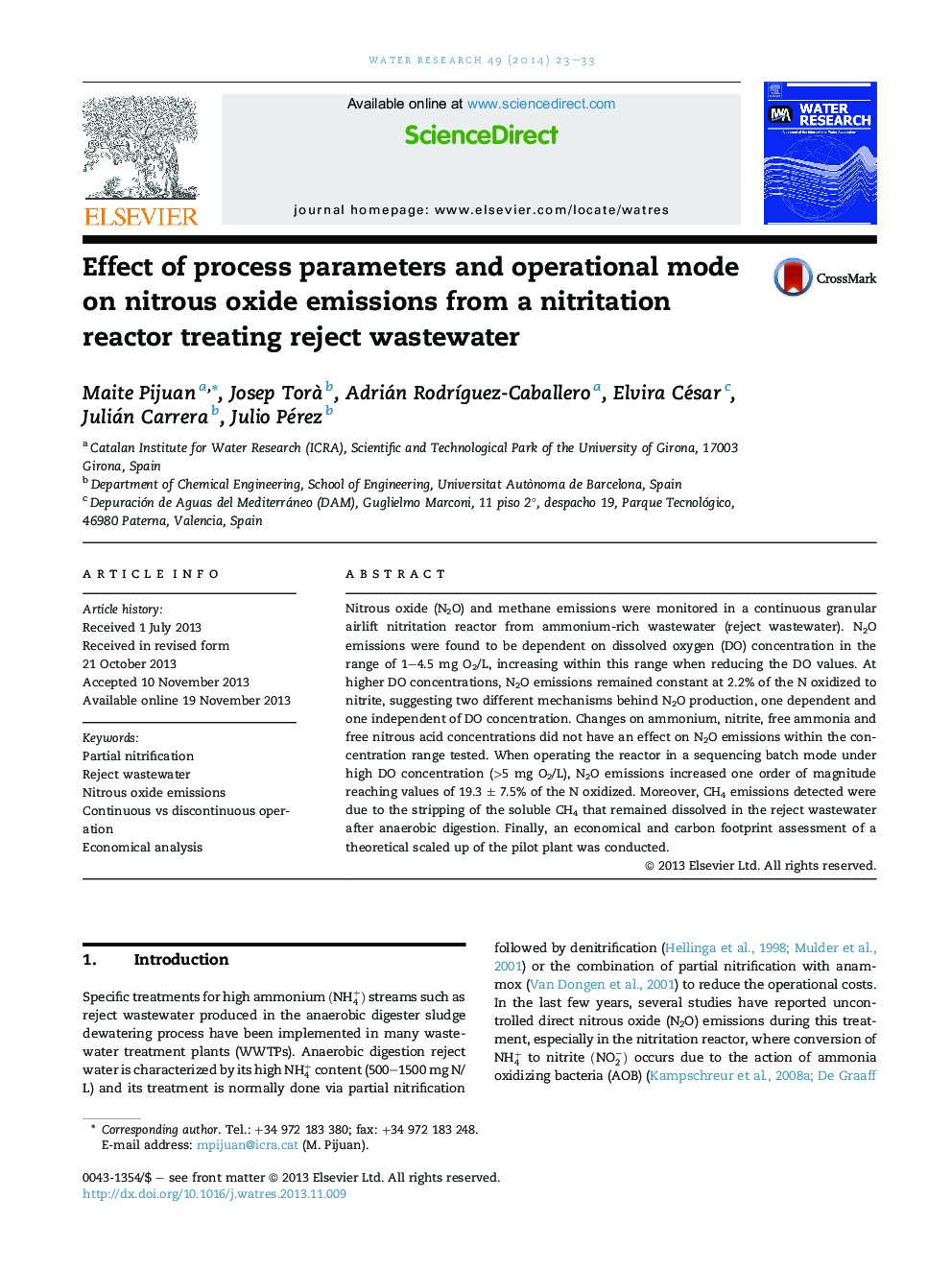| Article ID | Journal | Published Year | Pages | File Type |
|---|---|---|---|---|
| 4481688 | Water Research | 2014 | 11 Pages |
•2.2–6% of NH4+ oxidized was converted to N2O during nitritation of reject WW.•N2O emissions decreased (6–2.2%) when increasing DO concentration (1.1–4.5 ppm).•N2O emissions increased one order of magnitude when operating in SBR mode.•Operating with the lowest N2O emission is possible under a carbon tax scenario.
Nitrous oxide (N2O) and methane emissions were monitored in a continuous granular airlift nitritation reactor from ammonium-rich wastewater (reject wastewater). N2O emissions were found to be dependent on dissolved oxygen (DO) concentration in the range of 1–4.5 mg O2/L, increasing within this range when reducing the DO values. At higher DO concentrations, N2O emissions remained constant at 2.2% of the N oxidized to nitrite, suggesting two different mechanisms behind N2O production, one dependent and one independent of DO concentration. Changes on ammonium, nitrite, free ammonia and free nitrous acid concentrations did not have an effect on N2O emissions within the concentration range tested. When operating the reactor in a sequencing batch mode under high DO concentration (>5 mg O2/L), N2O emissions increased one order of magnitude reaching values of 19.3 ± 7.5% of the N oxidized. Moreover, CH4 emissions detected were due to the stripping of the soluble CH4 that remained dissolved in the reject wastewater after anaerobic digestion. Finally, an economical and carbon footprint assessment of a theoretical scaled up of the pilot plant was conducted.
Graphical abstractFigure optionsDownload full-size imageDownload high-quality image (209 K)Download as PowerPoint slide
